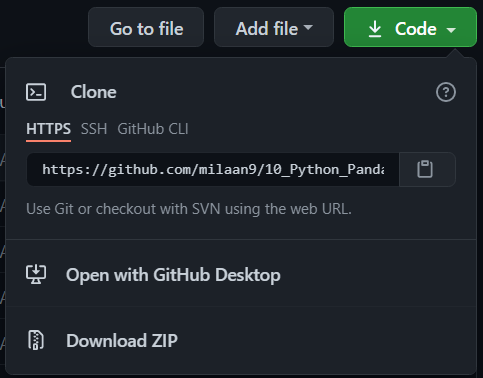
In Pandas, the data is usually utilized to support the statistical analysis in SciPy, plotting functions from Matplotlib, and machine learning algorithms in Scikit-learn.
Here are just a few of the things that pandas does well:
- Easy handling of missing data (represented as
NaN) in floating point as well as non-floating point data - Size mutability: columns can be inserted and deleted from DataFrame and higher dimensional objects
- Automatic and explicit data alignment: objects can be explicitly aligned to a set of labels, or the user can simply
ignore the labels and let
Series,DataFrame, etc. automatically align the data for you in computations - Powerful, flexible group by functionality to perform split-apply-combine operations on data sets, for both aggregating and transforming data
- Make it easy to convert ragged, differently-indexed data in other Python and NumPy data structures into DataFrame objects
- Intelligent label-based slicing, fancy indexing, and subsetting of large data sets
- Intuitive merging and joining datasets
- Flexible reshaping and pivoting of datasets
- Hierarchical labeling of axes (possible to have multiple labels per tick)
- Robust IO tools for loading data from flat files (CSV and delimited), Excel files, databases, and saving/loading data from the ultrafast HDF5 format
- Time series-specific functionality: date range generation and frequency conversion, moving window statistics, moving window linear regressions, date shifting and lagging, etc.
Pandas have two core data structure components, and all operations are based on those two objects. Organizing data in a particular way is known as a data structure. Here are the two pandas data structures:
- Series
- DataFrame
These are online read-only versions. However you can Run ▶ all the codes online by clicking here ➞
Open your 

-
pip install pandas
Once Installed now we can import it inside our python code.
You can 

Go here if you aren't here already and click ➞ ✰ Star and ⵖ Fork button in the top right corner. You will be asked to create a GitHub account if you don't already have one.
-
Go
hereand click the big green ➞Codebutton in the top right of the page, then click ➞Download ZIP. -
Extract the ZIP and open it. Unfortunately I don't have any more specific instructions because how exactly this is done depends on which operating system you run.
-
Launch ipython notebook from the folder which contains the notebooks. Open each one of them
Kernel > Restart & Clear Output
This will clear all the outputs and now you can understand each statement and learn interactively.
If you have git and you know how to use it, you can also clone the repository instead of downloading a zip and extracting it. An advantage with doing it this way is that you don't need to download the whole tutorial again to get the latest version of it, all you need to do is to pull with git and run ipython notebook again.
I'm Dr. Milaan Parmar and I have written this tutorial. If you think you can add/correct/edit and enhance this tutorial you are most welcome🙏
See github's contributors page for details.
If you have trouble with this tutorial please tell me about it by Create an issue on GitHub. and I'll make this tutorial better. This is probably the best choice if you had trouble following the tutorial, and something in it should be explained better. You will be asked to create a GitHub account if you don't already have one.
If you like this tutorial, please give it a ⭐ star.
You may use this tutorial freely at your own risk. See LICENSE.











